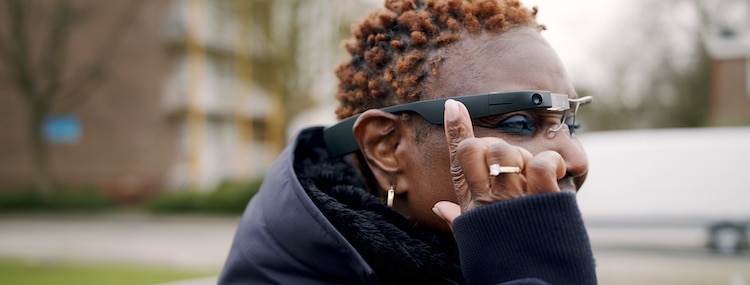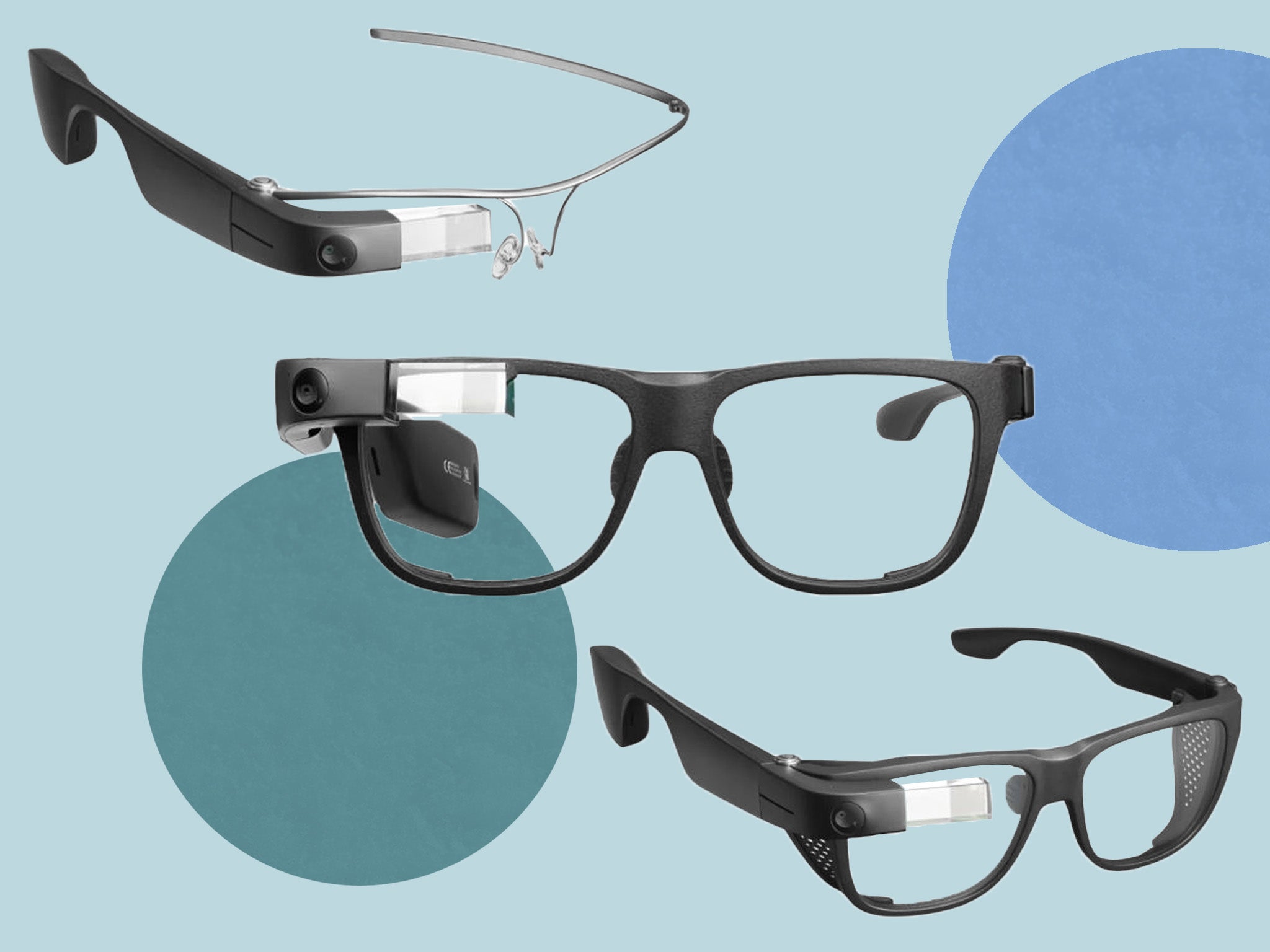Empowering Self-reliance With Assistive Innovation for the Blind
The integration of assistive modern technology for individuals that are blind or visually damaged represents a substantial improvement in fostering independence and boosting high quality of life. With a variety of gadgets-- from screen visitors to innovative responsive tools-- these technologies not just facilitate navigation and communication but also promote social incorporation and involvement in numerous aspects of life. As we explore the diverse sorts of assistive devices and their real-world applications, it comes to be clear that the impact is profound. The evolution of this technology increases crucial concerns regarding ease of access and future developments that require additional assessment.
Understanding Assistive Modern Technology
Although assistive innovation has progressed substantially for many years, its essential function stays the same: to improve the lifestyle for individuals with specials needs, especially those who are visually impaired or blind. This modern technology encompasses a broad series of devices and gadgets that assist in freedom and functionality in day-to-day activities.
Assistive modern technology can be classified into low-tech and state-of-the-art services, each created to meet certain needs. Sophisticated tools frequently consist of software application applications, specialized equipment, and adaptive devices that make use of innovative modern technology to give support in different contexts. Conversely, low-tech solutions might involve daily things that are customized to enhance accessibility, such as magnifiers or tactile markers.
The assimilation of assistive modern technology right into the lives of individuals that are blind or aesthetically impaired not just advertises autonomy yet additionally promotes social addition and engagement in professional and academic environments. By leveraging these innovations, customers can browse their environments, gain access to details, and connect successfully, therefore enhancing their overall lifestyle. Recognizing assistive technology is vital for supporters, experts, and caregivers that aim to sustain individuals in maximizing their possible and accomplishing higher freedom.
Kinds of Assistive Instruments
Assistive gadgets for the visually impaired and blind are essential tools that improve daily living by addressing details obstacles come across by users. These gadgets can be broadly categorized into three main types: optical gadgets, electronic gadgets, and sensory tools.

Sensory devices, such as Braille display screens and tactile maps, offer different methods to receive information. Braille displays transform electronic text right into Braille, enabling individuals to go through touch. Responsive maps use spatial understanding with increased textures and lines, allowing for far better environmental awareness.
Together, these assistive gadgets equip people with aesthetic problems to involve even more completely with their environments, advertising higher self-reliance and self-confidence in everyday activities.

Influence On Day-to-day Live
The integration of assistive modern technology into the day-to-days live of individuals who are blind or aesthetically impaired substantially enhances their capability to communicate and navigate with the globe around them. Instruments such as screen viewers, Braille displays, and mobile applications assist in access to details, enabling users to engage with electronic web content, connect efficiently, and take care of day-to-day jobs individually.
Moreover, technologies like clever glasses and navigating apps supply real-time support in unknown environments, enhancing movement and confidence. These devices allow individuals to recognize challenges, checked out indicators, and even acknowledge faces, thus cultivating a feeling of freedom in public spaces. Additionally, home automation systems, which can be managed with voice commands, allow people to handle their living settings better, boosting convenience and security.
The impact of assistive innovation prolongs past functional jobs; it advertises social inclusion and psychological health. By connecting the space in between people and their surroundings, these modern technologies equip individuals to get involved fully in neighborhood tasks, go after instructional opportunities, and take part in significant partnerships. Inevitably, the advancement of assistive innovation contributes in redefining the opportunities for individuals who are blind or aesthetically damaged, causing a much more obtainable and inclusive society.
Success Stories and Testimonials

One more effective review originates from Mark, a recent university graduate who made use of screen analysis software application throughout his scholastic trip. This modern technology enabled him to gain access to program products and take part in discussions, inevitably causing his effective shift into the labor force. Mark credit histories assistive innovation for empowering him to accomplish his occupation objectives, highlighting its role in leveling the having fun area for individuals with visual problems.
Additionally, community facilities have reported boosted participation in their programs thanks to the intro of accessible digital systems. These systems have actually made it much easier for people to connect, share sources, and support one another. These success stories jointly highlight the extensive effect of assistive modern technology in fostering independence, enhancing lifestyle, and damaging down barriers for the blind and visually damaged area.
Future Trends in Assistive Tech
Emerging modern technologies are positioned to change the landscape of assistive technology for people that are blind or visually damaged. Innovations in expert system (AI) and device discovering are boosting the capabilities of devices, allowing even more intuitive customer experiences. AI-driven applications are significantly able to check out and recognize things text aloud in real-time, offering customers with valuable info regarding their surroundings.
Additionally, innovations in wearable technology are producing new chances for independence. Smart glasses Clicking Here equipped with increased truth attributes can overlay critical details onto the customer's visual field, promoting navigating and communication with the atmosphere. Furthermore, the combination of Internet of Points (IoT) devices is simplifying availability in smart homes, allowing customers to manage home appliances and get notices via voice commands or responsive interfaces.
The growth of braille screens and responsive comments systems is also on the increase, advertising accessibility to electronic content and boosting communication. As these modern technologies remain to evolve, they promise to improve everyday living, academic possibilities, and work prospects for individuals with visual optometric care disabilities. Continuous cooperation between technologists, users, and campaigning for teams will be vital in making sure these technologies satisfy the demands of the area properly.
Final Thought
To conclude, assistive modern technology plays a crucial duty in improving the independence of people that are aesthetically impaired or blind. By supplying vital devices and sources, these find an ophthalmologist modern technologies help with improved navigation, access, and interaction to info, thus promoting autonomy and positive self-image. The transformative effect of assistive gadgets not only promotes effective interaction with the environment yet additionally encourages social incorporation and participation in different aspects of life, inevitably empowering customers to flourish within their communities.
The integration of assistive technology for individuals that are visually damaged or blind stands for a considerable advancement in promoting independence and improving top quality of life.The assimilation of assistive modern technology right into the lives of individuals that are blind or visually impaired not only advertises freedom however additionally cultivates social inclusion and participation in educational and expert environments. Ultimately, the improvement of assistive technology is important in redefining the opportunities for people that are aesthetically damaged or blind, leading to a more comprehensive and accessible culture.
Several individuals that are blind or aesthetically damaged have shared inspiring success tales that highlight the transformative influence of assistive technology on their lives.In conclusion, assistive technology plays a pivotal role in boosting the independence of people who are blind or visually damaged.